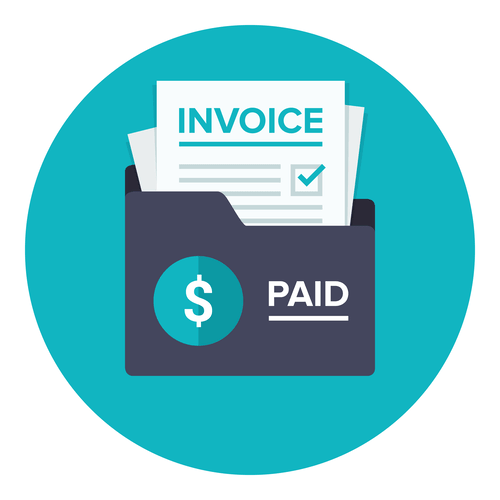
It is similar to gross profit margin, but it includes the carrying cost of inventory. Two companies with similar gross profit margins could have drastically different adjusted gross margins depending on the expenses that they incur to transport, insure, and store inventory. The gross profit margin can be used by management on a per-unit or per-product basis to identify successful vs. unsuccessful product lines. The operating profit margin is useful to identify the percentage of funds left over to pay the Internal Revenue Service and the company’s debt and equity holders. Both the total sales and cost of goods sold are found on the income statement. Occasionally, COGS is broken down into smaller categories of costs like materials and labor.
- The problem is that certain production expenses are not entirely changeable.
- Next, the gross profit of each company is divided by revenue to arrive at the gross profit margin metric.
- Gross profit represents the actual dollar amount generated from a company’s core operations before considering other operating expenses.
- The gross profit is therefore $100,000 after subtracting its COGS from sales.
- This might entail R&D costs, rebranding expenses, or promotional costs to introduce new products, all of which can strain gross margins, at least temporarily.
- You may find it easier to calculate your gross profit margin using computer software.
Premium Investing Services
The above gross margin formula indicates that for every dollar in revenue, $0.49 is available for operational costs. Net margin, on the other hand, provides a snapshot of the profitability of the entire company, including not only the cost of goods sold in the equation, but all operating expenses as well. Net profit margin is typically expressed as a percentage but can also be represented in decimal form. The net profit margin illustrates how much of each dollar in revenue collected by a company translates into profit. John Trading Concern achieved a gross profit ratio of 25% during the period.
- The gross profit percentage could be negative, and the net income could be coming from other one-time operations.
- It measures how much money a company squeezes from its total revenue or total sales.
- The managers of a business should maintain a close watch over the gross margin ratio, since even a small decline can signal a drop in the overall profits of the business.
- A high gross profit margin indicates that a business is doing well; on the other hand, a low margin suggests that there is room for progress.
- Good gross profits vary by industry, and new businesses typically have a smaller gross profit ratio.
How to use gross margin to evaluate a company

One key performance indicator that drives profitability and informs decision-making is Gross Margin. Kristen Slavin is a CPA with 16 years of experience, specializing in accounting, bookkeeping, and tax services for small businesses. gross margin accounting A member of the CPA Association of BC, she also holds a Master’s Degree in Business Administration from Simon Fraser University. In her spare time, Kristen enjoys camping, hiking, and road tripping with her husband and two children.
Ask Any Financial Question

This means they retained $0.75 in gross profit per dollar of revenue, for a gross margin of 75%. By streamlining operations, reducing downtime, and optimizing resource utilization, businesses can extract more value from every dollar spent, enriching the gross margin. This metric encapsulates the direct costs tied to the production of goods or delivery of services. From raw material costs to direct labor, COGS offers a microscopic view of the expenses incurred in bringing a product or service to market. The cost of sales in Year 2 represents 78.9% of sales (1 minus gross profit margin, or 328/1,168); while in Year 1, cost of sales represents 71.7%.

Changes in gross profit margin are used to analyze trends in profitability and the cost of inputs. Investors are typically interested in GP as a percentage because this allows them to compare margins between companies no matter their size or sales volume. For instance, an investor can see Monica’s 65 percent margin and compare it to Ralph Lauren’s margin even though RL is a billion dollar company. It also allows investors a chance to see how profitable the company’s core business activities are. The gross margin measures the percentage of revenue a company retains after deducting the costs of producing the goods or services it sells. Gross margin ratio is often confused with the profit margin ratio, but the two ratios are completely different.
New companies should expect their gross profits to be several percentage points lower than established companies in the same industry. The more important metric is how your company’s gross profit margin changes. You should aim for steady growth in your gross profit margin as your business gradually expands and you establish your customer base. Companies strive for high gross profit margins, as they indicate greater degrees of profitability. When a company has a higher profit margin, it means that it operates efficiently.
When you improve your profit margin, you actually make more money without needing to increase sales or gross revenue. That’s because profit margins vary from industry to industry, which means that companies in different sectors aren’t necessarily comparable. So, for example, a retail company’s profit margins shouldn’t be compared to those of an oil and gas company. A higher gross margin indicates a firm’s capability to cover operating expenses and turn a profit for each unit of product or service sold.
Implementing pricing strategies
According to a New York University analysis of industries in January 2022, the average profit margins range from nearly 29% for railroad transportation to almost -20% for renewable and green energy. The average net profit margin for general retail sits at 2.65%, while the average margin for restaurants is 12.63%. If you are a business owner, improving your profit margin is an important part of growing your company. Your profit margin shows how much money you make from every dollar of your gross revenue.
- Only direct materials, according to others, should be included because they are the only variable that changes in proportion to income.
- As an example of how to calculate gross margin, consider a company that during the most recent quarter generated $150 million in sales and had direct selling costs of $100 million.
- Divide that figure by the total revenue and multiply it by 100 to get the gross margin.
- You then express the result as a percentage by dividing by total revenue and multiplying by 100, similar to gross and net profit margins.

A high ratio suggests that the company is not spending too much of its revenues on production expenses like salaries and raw materials. Gross profit margin effectively measures the overall financial health and efficiency of your business, determining the amount of profit left over after direct production costs have been subtracted. Profit margin is one of the simplest and most widely used financial ratios in corporate finance.
